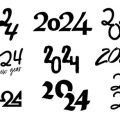Understanding Bazi and Its Cultural Background
Bazi, also known as the Four Pillars of Destiny, is an ancient Chinese metaphysical system that has fascinated people for centuries. At its core, Bazi analyzes a person’s birth data—year, month, day, and hour—to reveal unique patterns that influence personality, strengths, challenges, and life opportunities. In Chinese culture, Bazi has long been used to guide major life decisions such as career choices, relationships, and even health-related matters.
The roots of Bazi trace back over a thousand years to the Tang and Song dynasties in China. Historically, it was a tool used by scholars and advisors in royal courts to help emperors make critical decisions. Over time, Bazi became more accessible to everyday people as a way to understand themselves and their destiny.
Bazi’s Journey from East to West
While Bazi remains deeply embedded in Chinese tradition, its appeal has steadily grown in Western countries. More Americans are turning to Bazi not just for fortune telling but as a framework for self-discovery and personal development. The Five Elements theory at the heart of Bazi—Wood, Fire, Earth, Metal, and Water—offers a holistic perspective that resonates with those seeking balance and insight beyond typical personality tests.
Why Is Bazi Gaining Popularity in the U.S.?
| Reason | Description |
|---|---|
| Self-Discovery | Bazi provides deep insights into personal strengths and areas for growth. |
| Cultural Curiosity | Americans are increasingly interested in global philosophies and wellness traditions. |
| Personalized Guidance | Bazi offers tailored advice based on individual birth charts instead of generic solutions. |
| Holistic Approach | The integration of the Five Elements aligns with the growing trend toward mind-body wellness. |
The Modern Appeal of an Ancient Wisdom
Today, you’ll find Bazi practitioners offering consultations in cities like New York and Los Angeles. Social media influencers highlight their own Bazi journeys, while online communities exchange tips on integrating this wisdom into daily routines. Whether you’re curious about how your birthday shapes your life path or looking for tools to support your goals, Bazi’s rich cultural heritage and adaptable framework make it an exciting resource for modern Americans exploring new ways to understand themselves.
2. An Overview of the Five Elements
In Bazi, also known as Four Pillars of Destiny, the Five Elements—Wood, Fire, Earth, Metal, and Water—are at the heart of understanding your personality and life path. Each element represents more than just a material; it carries symbolic meanings and influences how you interact with the world and others.
What Are the Five Elements?
| Element | Symbolic Meaning | Personality Traits |
|---|---|---|
| Wood | Growth, creativity, expansion | Generous, flexible, idealistic |
| Fire | Passion, energy, transformation | Enthusiastic, outgoing, dynamic |
| Earth | Stability, nurturing, support | Reliable, practical, caring |
| Metal | Strength, structure, discipline | Determined, organized, principled |
| Water | Wisdom, adaptability, flow | Resourceful, intuitive, flexible |
The Interaction of the Five Elements in Bazi
The magic of the Five Elements is not just in their individual meanings but in how they interact with each other. These relationships are often described as cycles: the Generating (supportive) Cycle and the Controlling (balancing) Cycle.
The Generating Cycle (Supportive)
This cycle shows how each element helps create or strengthen another:
- Wood feeds Fire: Think of how wood is needed for a fire to burn.
- Fire creates Earth: Ashes from fire become part of the soil.
- Earth produces Metal: Minerals form within the earth.
- Metal enriches Water: Metal can help water condense and flow.
- Water nourishes Wood: Water helps plants (wood) grow.
The Controlling Cycle (Balancing)
This cycle explains how elements keep each other in check to maintain balance:
- Wood controls Earth: Roots stabilize and break up soil.
- Earth controls Water: Soil absorbs and shapes water’s flow.
- Water controls Fire: Water puts out fire.
- Fire controls Metal: Intense heat can melt metal.
- Metal controls Wood: Metal tools can cut wood.
Bazi’s Unique Perspective on the Five Elements
Bazi looks at your birth chart as a combination of these elements. The strength or weakness of each element in your chart shapes your character and destiny. For example, if you have a lot of Fire but little Water in your chart, you may be passionate but sometimes lack flexibility. Balancing these elements is key to personal growth and finding harmony in life.

3. The Influence of Each Element on Personality and Life Path
Understanding the Five Elements in Bazi
In Bazi, the Five Elements—Wood, Fire, Earth, Metal, and Water—represent more than just physical substances. They symbolize different energies that influence who we are, how we interact with others, and the directions our lives may take. You can think of these elements as similar to personality frameworks like the Myers-Briggs Type Indicator or the Big Five Personality Traits in Western psychology. Let’s explore how each element shapes character traits and life paths, making connections to familiar Western concepts along the way.
Personality Traits of Each Element
| Element | Core Traits | Western Parallel | Potential Life Path |
|---|---|---|---|
| Wood | Growth-oriented, compassionate, flexible, driven by ideals | Visionary (similar to “ENFJ” in MBTI or “Openness” in Big Five) | Leadership roles, creative fields, education, social causes |
| Fire | Passionate, charismatic, expressive, loves excitement | Inspirer (“ENTP”/“Extraversion”) | Entertainment, public speaking, sales, entrepreneurship |
| Earth | Stable, dependable, nurturing, values harmony | Caretaker (“ISFJ”/“Agreeableness”) | Counseling, management, healthcare, community work |
| Metal | Disciplined, determined, principled, focused on justice | Analyst (“INTJ”/“Conscientiousness”) | Law, engineering, finance, quality control |
| Water | Adaptable, resourceful, intuitive, values freedom | Explorer (“INFP”/“Openness & Neuroticism”) | Travel industry, research, writing, innovation-driven careers |
The Interplay Between Elements and Your Journey
No one is shaped by a single element alone; everyone’s Bazi chart contains a mix of elements that interact with each other. For example, someone with strong Wood and Fire elements might be both innovative and outgoing—think of a creative entrepreneur. In contrast, a person with dominant Earth and Metal could be a reliable leader who excels at organization and upholding standards.
How This Connects to Western Personality Models
If you’re familiar with personality types like Myers-Briggs or the Big Five model used in American workplaces and self-development circles, you’ll notice some overlap. Just as those models help people understand their strengths and growth areas for career choices or relationships, the Five Elements in Bazi give insight into your natural tendencies and life directions. This can help you make informed decisions about your path—whether you’re choosing a college major or considering a new job opportunity.
Personal Growth Through Element Awareness
The real value of understanding your Five Elements lies in recognizing both your strengths and your challenges. If you know you have a lot of Fire energy but little Earth, for instance, you might excel at starting projects but need to develop patience to see them through. By balancing your elements—much like balancing skills or traits in Western self-help—you can create greater harmony in your personal and professional life.
4. How the Five Elements Interact: Dynamics and Balance
In Bazi, the Five Elements—Wood, Fire, Earth, Metal, and Water—are not isolated forces. They interact with each other in ways that can either create harmony or lead to imbalance. Understanding these dynamics helps you see how your personal energy flows and where you might need to make adjustments for a more fulfilling life.
The Cycle of Creation and Control
The elements follow two main cycles: the cycle of creation (how one element supports another) and the cycle of control (how one element keeps another in check). Here’s a simple overview:
| Element | Supports (Creates) | Keeps in Check (Controls) |
|---|---|---|
| Wood | Fire | Earth |
| Fire | Earth | Metal |
| Earth | Metal | Water |
| Metal | Water | Wood |
| Water | Wood | Fire |
This system is a bit like the checks-and-balances concept in American government. Each branch (or element) has its strengths but also needs to be balanced by the others to prevent any single force from dominating. In life, when your elements are in harmony, you’re more likely to feel at peace and empowered.
Why Balance Matters: Lessons from Both Cultures
Bazi teaches that too much or too little of an element can cause problems—just like having too much work and not enough play can lead to burnout, something many Americans can relate to. The goal is to achieve balance. This idea mirrors popular American concepts such as “work-life balance” and “finding your groove.” When all five elements are interacting smoothly, you’re set up for growth, resilience, and well-being.
Tuning Into Your Elemental Mix for Self-Improvement
If your Bazi chart shows an excess or deficiency in one element, it’s a signal—similar to noticing when your daily routine is off-balance. For example, if you have too much Fire (which represents passion and drive), you might experience stress or restlessness. Bringing in more Water (which cools and soothes) could help restore calm. This approach is much like adjusting habits for personal growth—a core value in American self-improvement culture.
A Practical Example: Applying Elemental Wisdom Day-to-Day
Let’s say your chart lacks Metal (clarity and discipline). You might benefit from organizing your workspace or setting clearer goals—practices familiar to anyone who values productivity tips found in American business culture. By tuning into the elemental interplay within yourself, you tap into a time-tested way to pursue harmony and self-betterment.
5. Practical Applications: Using Bazi Insights to Shape Your Destiny
Putting the Five Elements to Work in Everyday Life
Bazi, or the Four Pillars of Destiny, is more than just ancient wisdom—it’s a practical tool that can help you make better choices every day. By understanding how the Five Elements (Wood, Fire, Earth, Metal, and Water) show up in your chart, you can align your actions with your natural strengths and address areas for growth. Let’s explore how Americans can use Bazi insights in career planning, relationships, and wellness.
Career Choices: Find Your Professional Sweet Spot
Each Element relates to specific industries and work styles. Here’s a simple guide to match your dominant Bazi element with potential career paths:
| Element | Best Fit Careers | Why It Works |
|---|---|---|
| Wood | Education, Writing, Environmental Science | Wood people are creative, growth-oriented, and excel at nurturing ideas and people. |
| Fire | Marketing, Entertainment, Hospitality | Fire types shine in dynamic roles where passion and quick thinking are valued. |
| Earth | Real Estate, Counseling, Food Industry | Earth individuals are stable, supportive, and great at building trust. |
| Metal | Finance, Law, Engineering | Metal folks love structure, precision, and working with rules or systems. |
| Water | Tech, Psychology, Travel & Logistics | Water personalities thrive on adaptability and connecting ideas or people across boundaries. |
If you’re considering a job change or negotiating a promotion, look at your Bazi element for clues about environments where you’ll flourish. For example, someone with strong Metal might feel more fulfilled in a structured corporate setting than in a startup’s chaos.
Relationships: Build Stronger Connections
The Five Elements also shape how you relate to others. Knowing both your element and that of your partner or friends can help smooth out misunderstandings and strengthen bonds. Here’s a quick reference:
| Your Element | Your Strengths in Relationships | Watch Out For… |
|---|---|---|
| Wood | Loyalty and encouragement—always cheering others on. | Pushing too hard for growth; being impatient with slow progress. |
| Fire | Sparking excitement and keeping things lively. | Dramatic reactions; needing constant attention or validation. |
| Earth | Nurturing support and reliability—you’re the rock. | Tendency to worry or become stubborn when stressed. |
| Metal | Loyalty and clear communication—you value honesty. | Criticism or inflexibility when plans go off-script. |
| Water | Empathy and adaptability—easy to get along with. | Avoiding conflict or being noncommittal under pressure. |
If you find yourself clashing repeatedly with someone close, try viewing the situation through the lens of the Five Elements. Maybe your “Fire” energy is overwhelming their “Earth” steadiness—being aware lets you adjust your approach for better harmony.
Wellness Decisions: Personalize Your Self-Care Routine
Your dominant Bazi element can even point to wellness practices that support your physical and emotional health. Here are some easy-to-try ideas tailored for each element:
| Element | Self-Care Focus |
|---|---|
| Wood | Add stretching or yoga for flexibility; try journaling to process emotions. |
| Fire | Pursue group fitness classes or outdoor adventures; schedule regular social time. |
| Earth | Create routines around meals and sleep; enjoy gardening or cooking as grounding activities. |
| Metal | Meditate for clarity; declutter your space regularly for peace of mind. |
| Water | Swim or walk near water; explore creative hobbies like painting or music. |
If you feel stuck or off-balance, experimenting with new habits based on your Bazi element can refresh your energy. For instance, if you’re a “Water” person feeling drained by work stress, spending time at a lake or listening to calming music might help restore your flow.
Bazi Wisdom in American Life: Real-Life Examples
A Career Pivot Story: Embracing Your Elemental Strengths
Susan from Seattle felt uninspired in her data analyst role (a classic Metal job), but her Bazi chart showed strong Fire energy. After taking improv classes for fun—and loving it—she switched careers to marketing. Susan now feels energized every day because her work matches her elemental strengths.
A Relationship Reset: Understanding Differences Through Elements
Tony (an Earth type) was frustrated by his friend Mike’s (a Water type) unpredictable plans. Learning about their elements helped Tony appreciate Mike’s need for spontaneity while Mike understood Tony’s preference for stability—they found ways to compromise instead of clash.


